CLODRONIC ACID
- CAS NO.:10596-23-3
- Empirical Formula: CH4Cl2O6P2
- Molecular Weight: 244.89
- MDL number: MFCD00867075
- EINECS: 234-212-1
- SAFETY DATA SHEET (SDS)
- Update Date: 2025-07-04 15:11:37

What is CLODRONIC ACID?
Absorption
Oral clodronic acid has a bioavailability of 1-2%. A 200mg intravenous dose reaches a Cmax of 16.1mg/L with an AUC of 44.2mg*h/L. A 200mg intramuscular dose reaches a Cmax of 12.8mg/L with an AUC of 47.5mg*h/L. Further pharmacokinetic data for clodronic acid are not readily available.
Toxicity
Patients experiencing an overdose may present with hypocalcemia, while severe overdoses can present with kidney failure, liver damage, and unconsciousness. Overdose can be managed through symptomatic and supportive care, including monitoring and administration of electrolytes including calcium. Gastric lavage may remove unabsorbed drug in the gastrointestinal tract.
The Uses of CLODRONIC ACID
Clodronic Acid is a bisphosphonate that can be used in the treatment of osteoporosis. Its ATP-analogs can inhibit cell signaling pathways.
The Uses of CLODRONIC ACID
Regulator (calcium).
Indications
Clodronic acid is indicated as an adjunct in the management of osteolysis from bone metastases of malignant tumors and for management of hypercalcemia of malignancy.
Background
Clodronic acid is a first generation bisphosphonate similar to etidronic acid and tiludronic acid. These drugs were developed to mimic the action of pyrophosphate, a regulator of calcification and decalcification. clodronate’s use has decreased over the years in favor of the third generation, nitrogen containing bisphosphonate zoledronic acid, ibandronic acid, minodronic acid, and risedronic acid.
Clodronic acid is not FDA approved, but is approved in Canada.
Definition
ChEBI: An organochlorine compound that is methylene chloride in which both hydrogens are replaced by phosphonic acid groups. It inhibits bone resorption and soft tissue calcification, and is used (often as the disodium salt tetrahydrate) as an adjunct in the trea ment of severe hypercalcaemia associated with malignancy, and in the management of osteolytic lesions and bone pain associated with skeletal metastases.
Pharmacokinetics
Clodronic acid is a first generation bisphosphonate that inhibits osteoclast mediated bone resorption. It has a wide therapeutic index as a large overdose is required for significant toxicity and a long duration of action due to the slow release from bone. Patients should be counselled regarding the risk of hypocalcemia, hypovolemia, renal insufficiency, transient hyperphosphatemia, and transient hyperparathyroidism.
Metabolism
Clodronate is not metabolized in humans.
Properties of CLODRONIC ACID
| Melting point: | 249-251° |
| Boiling point: | 474.7±55.0 °C(Predicted) |
| Density | 2.306±0.06 g/cm3(Predicted) |
| storage temp. | under inert gas (nitrogen or Argon) at 2-8°C |
| pka | 0.75±0.10(Predicted) |
| form | Solid |
| color | Off-white to light yellow |
Safety information for CLODRONIC ACID
| Signal word | Danger |
| Pictogram(s) |
 Corrosion Corrosives GHS05 |
| GHS Hazard Statements |
H290:Corrosive to Metals H314:Skin corrosion/irritation |
| Precautionary Statement Codes |
P234:Keep only in original container. P260:Do not breathe dust/fume/gas/mist/vapours/spray. P264:Wash hands thoroughly after handling. P264:Wash skin thouroughly after handling. P280:Wear protective gloves/protective clothing/eye protection/face protection. P363:Wash contaminated clothing before reuse. P390:Absorb spillage to prevent material damage. P301+P330+P331:IF SWALLOWED: Rinse mouth. Do NOT induce vomiting. P303+P361+P353:IF ON SKIN (or hair): Remove/Take off Immediately all contaminated clothing. Rinse SKIN with water/shower. P405:Store locked up. P406:Store in corrosive resistant/… container with a resistant inner liner. P501:Dispose of contents/container to..… |
Computed Descriptors for CLODRONIC ACID
New Products
DL-beta-(3-Bromophenyl)alanine Tetrabutylammonium perchlorate N,O-Dimethylhydroxylamine hydrochloride (RS)-beta-Amino-beta-(4-bromophenyl)propionic acid 2-Amino-5-bromo-4-(trifluoromethyl)pyridine(RM for Indian lab) N,N CARBONYL DIIMIDAZOLE Levothyroxine Impurity-F Montelukast EP Impurity-D/Montelukast USP Related Compound C Atorvastatin FXA Impurity/Atorvastatin Cyclic 6-Hydroxy Impurity Sodium Salt Isosulfan blue Keto N-Oxide Impurity Ivermectin Impurity F N-Nitroso des Methyl Tramadol/N-Nitroso-N-Desmethyl-Tramadol (R)-BoroLeu-(+)-Pinanediol-CF3COOH 1,4-bis(methylsulfonyl)butane 4-(5-amino-1-methyl-1h-benzoimidazol-2-yl)-butyric acid isopropyl ester. 5-Methyl-1,3-benzenediacetonitrile 4-Fluorothiophenol 1-methyl amino-2,4-dinitro benzene CSA (DL-10-Camphorsulfonic Acid) 2-Hydroxy-4-methylnicotinic acid 3-iodo-1H-pyrazolo[3,4-d]pyrimidin-4-amine (2S)-1-((2S,3S)-3-(2-methylbutyl)-4-oxooxetan-2-yl)pentadecan-2-yl formylleucinate 1-(3,5-dichlorophenyl)-2,2,2-trifluoroethane-1-sulfonyl chloride S-(1-(3,5-dichlorophenyl)-2,2,2-trifluoroethyl) ethanethioateRelated products of tetrahydrofuran
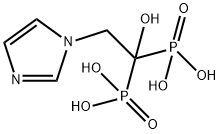


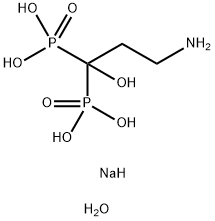

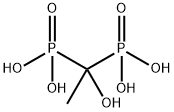
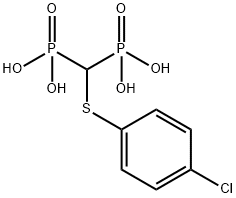
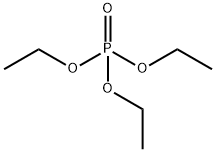
You may like
-
 Clodronic acid 95% CAS 10596-23-3View Details
Clodronic acid 95% CAS 10596-23-3View Details
10596-23-3 -
 674783-97-2 98+View Details
674783-97-2 98+View Details
674783-97-2 -
 H-D-TRP(FOR)-OH HCL 98+View Details
H-D-TRP(FOR)-OH HCL 98+View Details
367453-01-8 -
 DL-beta-(3-Bromophenyl)alanine 117391-50-1 98+View Details
DL-beta-(3-Bromophenyl)alanine 117391-50-1 98+View Details
117391-50-1 -
 49830-37-7 98+View Details
49830-37-7 98+View Details
49830-37-7 -
 3-Amino-3-(4-fluorophenyl)propanoic acid 98+View Details
3-Amino-3-(4-fluorophenyl)propanoic acid 98+View Details
325-89-3 -
 1428243-26-8 98+View Details
1428243-26-8 98+View Details
1428243-26-8 -
 1-aminocyclopentane carbonitrile, HCl 98+View Details
1-aminocyclopentane carbonitrile, HCl 98+View Details
16195-83-8
